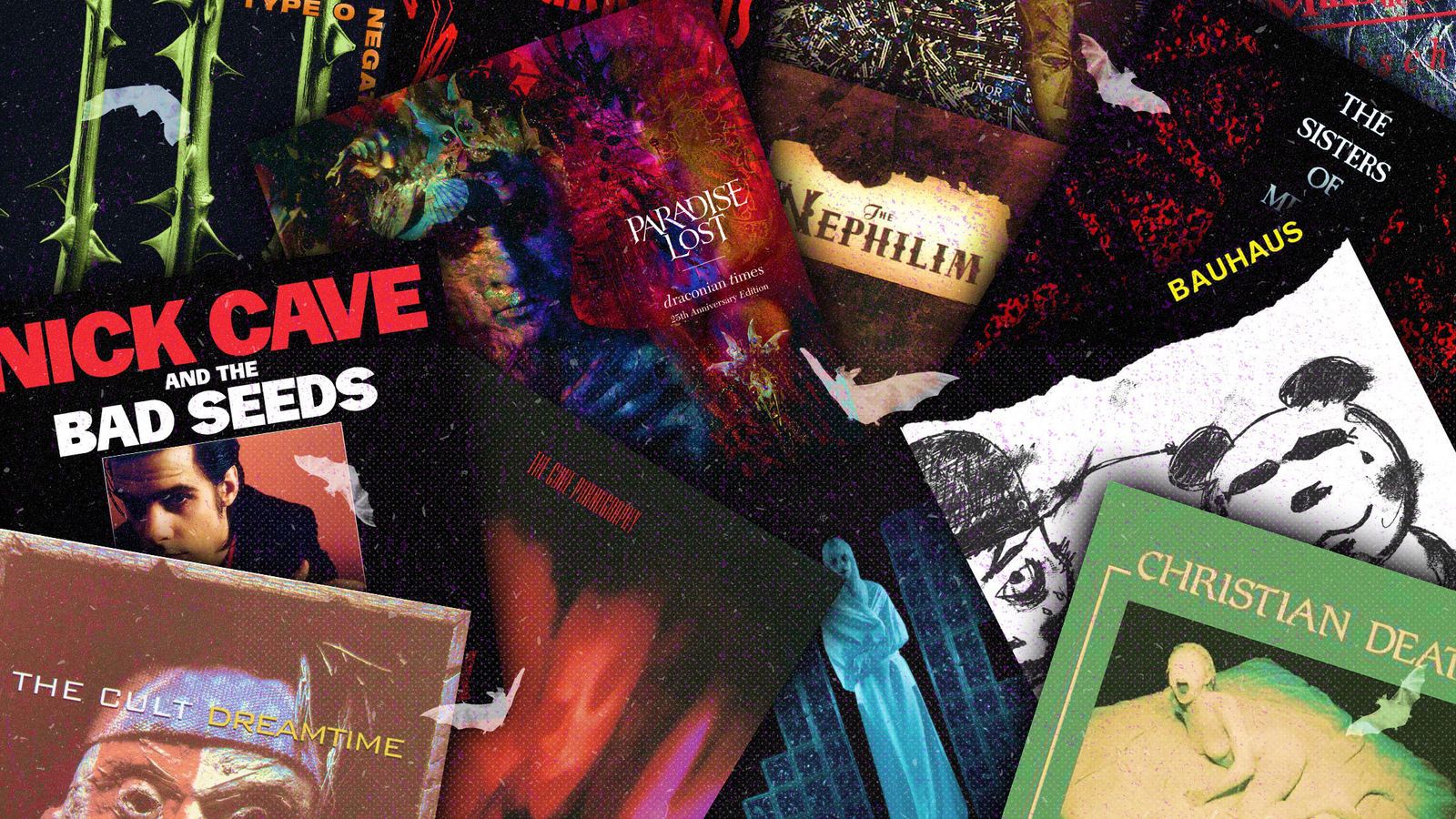Exploring Gothic Rock
The Dark and Haunting Sound of a Timeless Genre
Gothic rock, often simply referred to as “goth rock,” is a genre of music that emerged in the late 1970s and early 1980s, drawing influence from the post-punk movement and the darker, more atmospheric side of rock music. Known for its haunting melodies, melancholic lyrics, and theatrical aesthetics, gothic rock has become a cornerstone of alternative culture and has influenced countless sub genres in music, fashion, and art.
Origins and Evolution
Gothic rock first took shape during the late ’70s in the United Kingdom, where bands began to experiment with the brooding, introspective sound that would define the genre. While its roots can be traced to the post-punk era, where artists like Siouxsie and the Banshees and Bauhaus emerged, gothic rock quickly developed its own distinct identity, characterised by atmospheric instrumentation, dark lyrics, and an eerie, sometimes haunting vibe.
The genre’s founding moment is often attributed to Bauhaus, whose 1979 single Bela Lugosi’s Dead became a defining anthem of the gothic rock movement. This track, with its sparse, hypnotic bass line and Peter Murphy’s deep, dramatic vocals, laid the groundwork for the genre’s signature sound. Bauhaus’s blend of post-punk energy with dark, cinematic atmospheres captured the attention of listeners looking for something deeper, more melancholic.
Key Characteristics of Gothic Rock
Atmospheric Sound: One of the most distinctive features of gothic rock is its atmosphere. Unlike the aggressive, fast-paced punk rock or the clean melodies of pop, gothic rock often focuses on creating a moody, otherworldly environment. The music is typically slower and more methodical, with a focus on reverb-heavy guitars, haunting synthesisers, and somber, often echoing vocals.
Poetic and Dark Lyrics: Gothic rock lyrics often explore themes of existential despair, loneliness, death, love, and the supernatural. The darkness in the lyrics is often paired with a sense of romanticism, making it both eerie and melancholic. The imagery used in these songs frequently draws from gothic literature, horror films, and Victorian aesthetics, evoking an atmosphere of mystery and longing.
Distinctive Aesthetics: Just as gothic rock music is characterized by its atmospheric sound, its visuals are equally important. The fashion associated with the genre often includes dark, dramatic clothing like black leather, lace, corsets, velvet, and long coats. The use of makeup—especially heavy eyeliner, pale foundations, and dark lipstick—along with dark, angular hairstyles, further emphasises the genre’s theatrical and mysterious aura.
Vocal Styles: Vocals in gothic rock can range from operatic and haunting to deep and brooding. Many of the genre’s most iconic vocalists, such as Peter Murphy (Bauhaus), Andrew Eldritch (Sisters of Mercy), and Siouxsie Sioux (Siouxsie and the Banshees), use their voices in dramatic, almost otherworldly ways, adding to the sense of drama and emotion in the music.
Notable Bands and Influences
While Bauhaus is considered the pioneering band of gothic rock, many other acts helped define and shape the genre during its formative years. Siouxsie and the Banshees, with their atmospheric sound and introspective lyrics, were essential to the genre’s development. The Cure, though initially more post-punk, incorporated elements of gothic rock into their music, especially in albums like Pornography (1982) and Disintegration (1989), which became a major influence on the genre.
Other key figures in gothic rock include The Sisters of Mercy, whose epic sound combined dark rock with elements of electronic music, and Fields of the Nephilim, known for their mystical imagery and heavy, brooding sound. Each band contributed to the expansion of gothic rock, blending it with different styles to create sub genres such as death rock and dark wave.
The Cultural Impact
Gothic rock did not only influence music but also shaped the broader goth subculture, which flourished in the ’80s and ’90s. The goth movement brought together fans of dark fashion, literature, art, and film, embracing all things mysterious, melancholic, and romantic. Gothic rock concerts became places for like-minded individuals to gather, share their passion for the music, and express their individualistic style.
Even though the peak of gothic rock’s popularity may have waned after the ’80s, the genre remains a key influence on a range of alternative music styles, including industrial, dark wave, and even metal. Many of the bands from the early days of gothic rock continue to inspire new generations of listeners, and the influence of the genre can still be heard in contemporary music.
The Enduring Legacy of Gothic Rock
Despite its relatively niche status, gothic rock has an enduring appeal. The genre’s dark, brooding sound and evocative lyrics have ensured its continued relevance among music fans seeking more introspective, atmospheric experiences. In the digital age, platforms like 3DXChat allow fans to experience the gothic aesthetic in virtual spaces, from dark and moody rooms to immersive gothic rock parties.
Whether you’re drawn to its music, its aesthetic, or its deeper emotional resonance, gothic rock remains an influential genre in the music world, embodying a rich legacy of creativity, rebellion, and introspection. Its continued influence ensures that it will remain a staple of the alternative music scene for years to come.
By Sebina

Great Article Sebina,
I have performed a cursory review of Goth’s standing in general across the world and it seams that there are very few goth clubs around anymore. Toronto was one of the hotbeds of Goth in the 80’s and its now been reduced to a few clubs that have a small following of people in their 40’s despite there desperate attempts to experience some level of revival.
I was introduced to Goth by visiting 3DX rooms and I often enjoy the music. I adore bands like Type O and many others. I wish Goth would experience some level of revival. Perhaps 3DX can lead the charge. – Smiles.